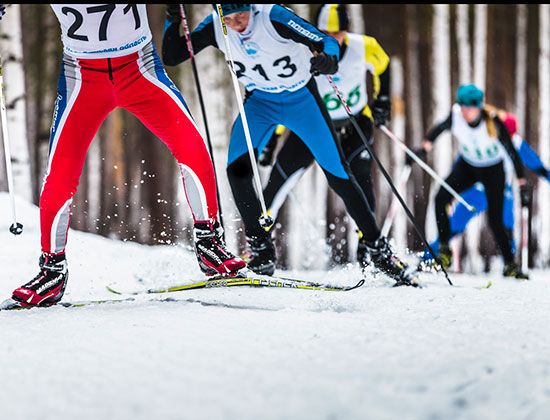How to get in shape for the slopes this season
12 February 2018
The 2018 Winter Olympics in South Korea started this month, an exciting line-up of events to keep us all gripped and eager to hit the slopes this winter. From cross country skiing to ski jumping, these professionals need to be in peak condition to face the world’s best athletes and achieve superior performances. Fortunately for all skiing enthusiasts, many gym machines and exercises have been lifted from skiing techniques – helping you prepare your body for the intensities of the slopes and reduce the chance of injury.
Here are some simple techniques you can incorporate into your next work-out:
Squat!
It is crucial that you develop strength in your quads and glutes in order to improve control in all aspects of your skiing. Squatting low and with weights will help build muscle in these areas, aim to increase your weight load each time you visit the gym to see ultimate results.
Control that core
Core strength is an important factor to improving your general technique, in particular it can help with your stance and balance on those steeper runs. Try the plank for a minute in the comfort of your own home or at the gym, ensuring that each time you add on 10 seconds.
Endurance goes a long way
Completing regular aerobic exercise will help your body to remain energised for longer on the slopes and you will notice a big difference. Try running, cycling or swimming up to four times a week for the best results.
At Fortius Clinic, we have a variety of Consultants who are keen skiers and specialists in treating ski injuries. We spoke to Mr Martin Goddard, Consultant Knee Surgeon, who described the most common cases he sees in his clinic and how you can take simple measures to avoid them.
Advice from the experts
Knee injuries account for 30-40% of all ski injuries. The body position, speed and changes of direction involved in skiing make the knee vulnerable to injury. At this time of year I see many patients who have injured their knees skiing. As a keen skier myself, I understand how significant a knee injury can be, as well as the importance of the best evidence based treatment and surgery to get them back on the slopes. The more modern, shorter and shaped carving skis have reduced the risk of getting a knee injury in recent years, so skiing is actually a safe sport!
The most common knee injury in skiing is a sprain to the medial collateral ligament running along the inside of the knee. The majority of these I treat in a hinged knee brace and patients should make an excellent recovery.
Anterior cruciate ligament injuries frequently occur during falls when the ski binding does not release and the knee twists. This is a significant injury, and I advise patients to get a proper diagnosis from a knee specialist as soon as possible when they return from abroad. These injuries do not need immediate treatment and patients can safely travel home in a knee brace. Not every patient needs an ACL reconstruction, but many will do in order to stabilise the knee for twisting and turning sporting activities.
My tips to reduce the risk of a knee injury are make sure your equipment is set up correctly. Ski bindings should be accurately adjusted to reflect your weight and skiing ability. Ski boots should be well fitting and not too loose or too tight. Women are more at risk from injuries from poorly fitting boots than men. If you are going skiing in the fresh powder Europe has had so much of this year, make sure you have a wider ski and consider taking a lesson to improve technique.
It is also advisable to take part in regular exercise prior to going skiing in order to increase fitness and prevent tiredness. Fatigue is a major contributor to sustaining a knee injury. Many knee injuries happen on the last run down so don’t spoil the day and take the lift instead if you are tired!


